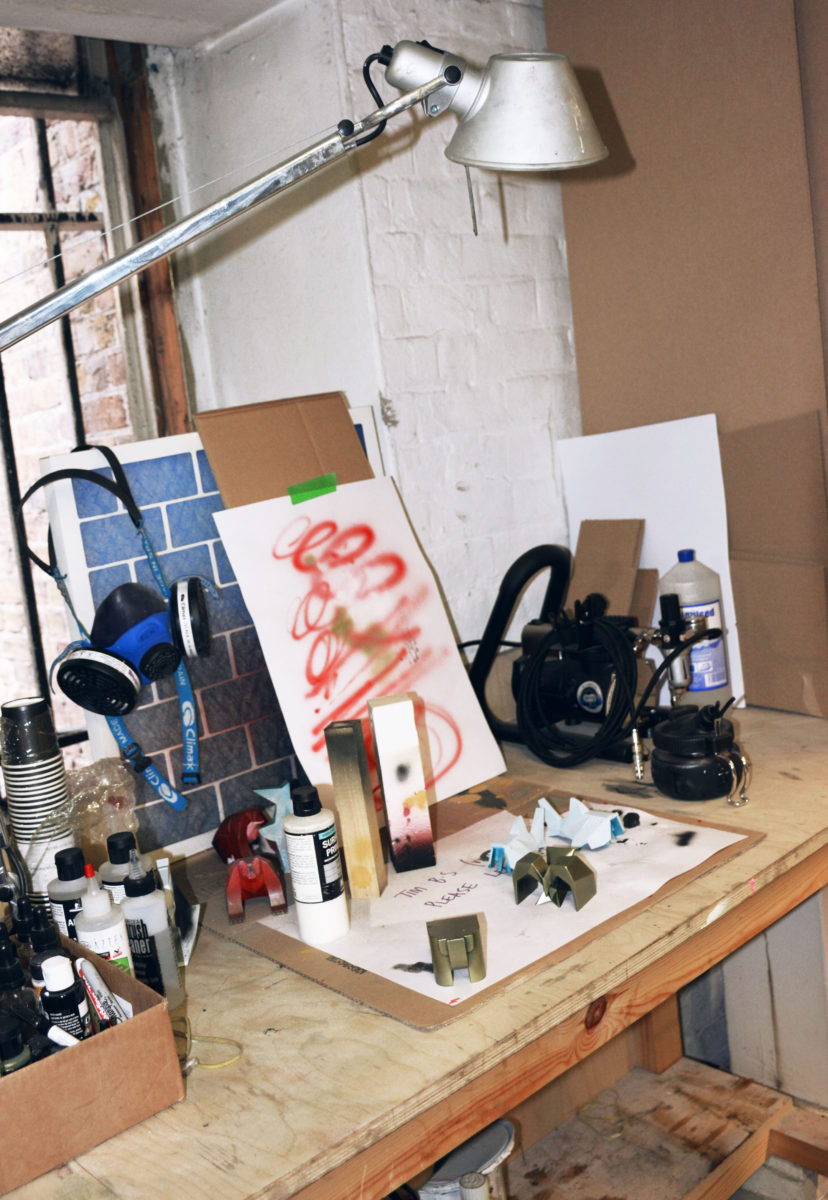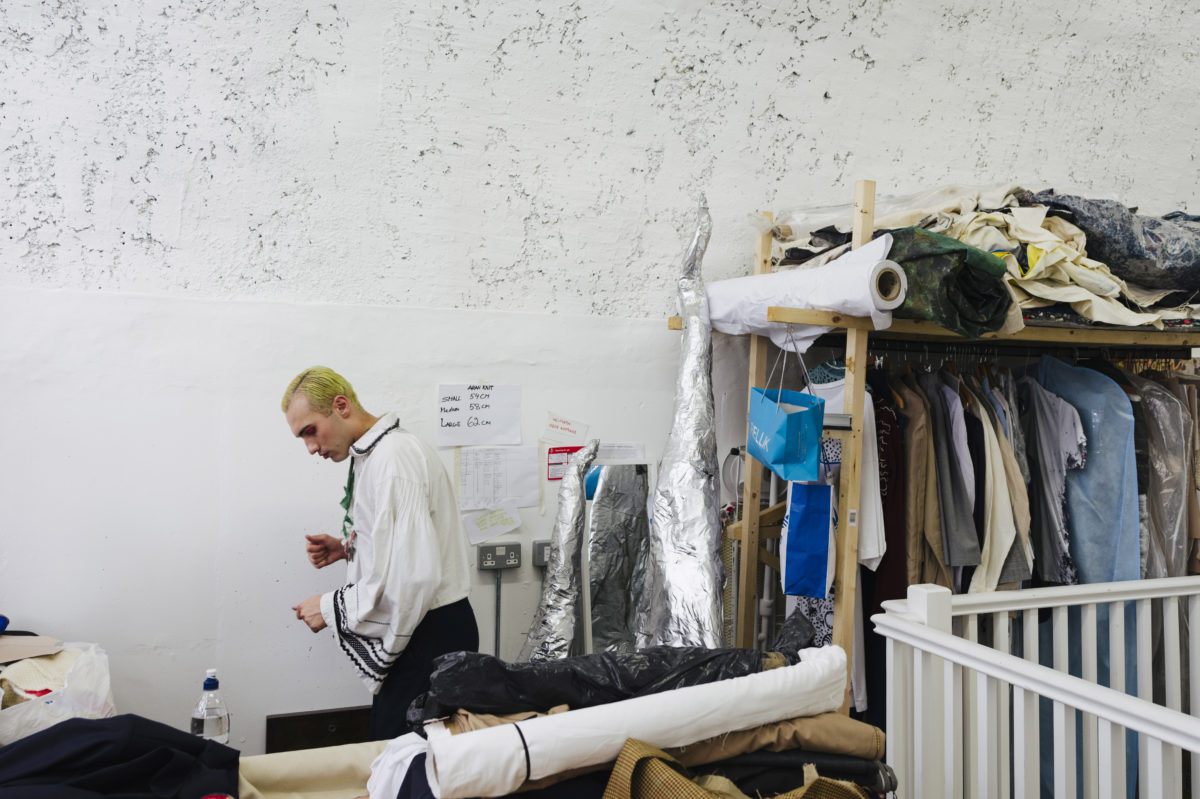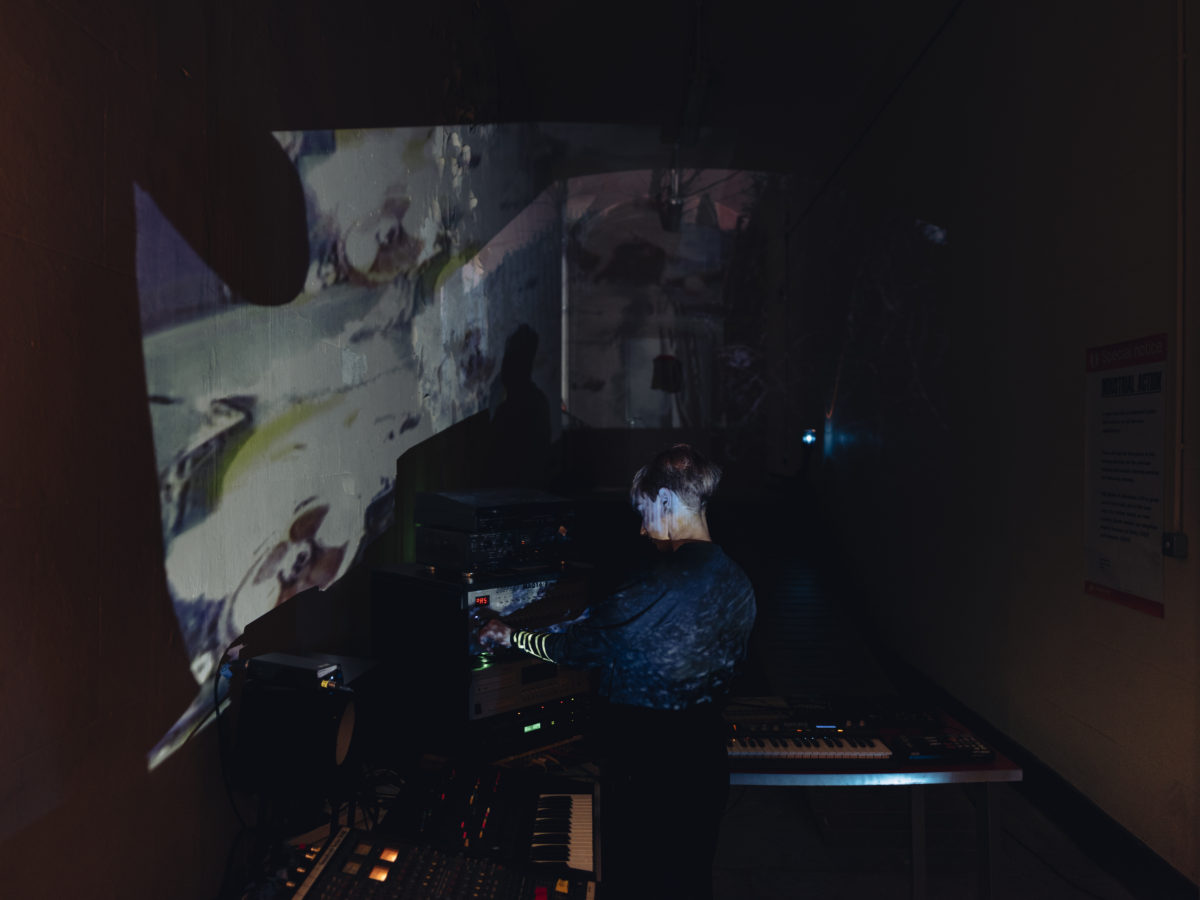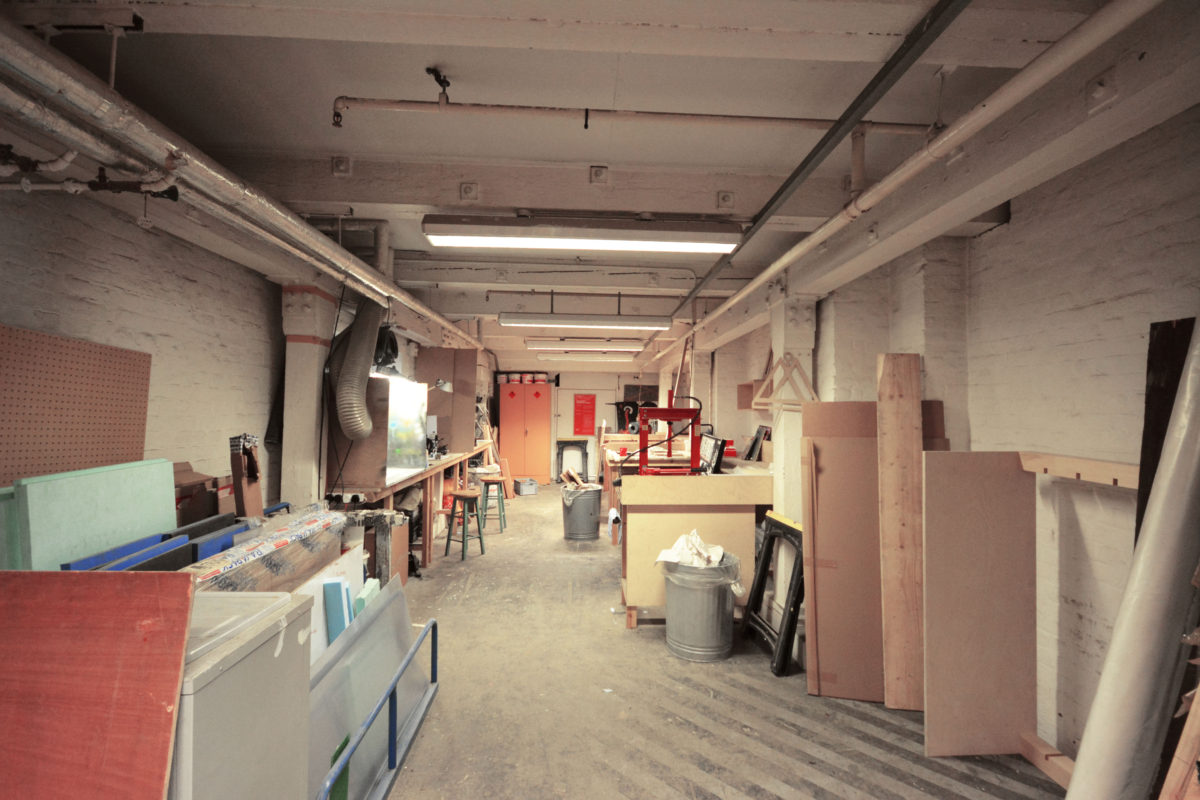Interview: Marie McPartlin, Director of Somerset House Studios
By Something CuratedSomerset House Studios is a recently launched experimental workspace in the centre of London connecting artists, makers and thinkers with audiences. The studios are a platform for the development of new creative projects and collaboration, promoting work that pushes progressive ideas, engages with current issues and pioneers new technologies. Over 100 resident artists will be supported to develop their practice inside the refurbished spaces of the former Inland Revenue building, responding to the changing ways in which artists are working with the acute rent increases in the capital. Something Curated met with the initiative’s ambitious Director, Marie McPartlin, to learn more about the exciting project, as well as her journey into this field.

Something Curated: Could you tell us about Somerset House Studios, the vision and ethos behind the initiative?
Marie McPartlin: The vision is primarily artistic, but it’s two-fold. Firstly, we want to be an engine room for cross-disciplinary work, and a place where having different art forms co-habiting in a space genuinely benefits the artists. Artists are not told they have to collaborate. Instead we put small things in place that encourage people to find each other. For example, in this space we’re interviewing in, it has a snooker table, decks and projector; artists can use the space as they choose but they can’t close it off to the rest of the community. We hope good projects and ideas will come from a strong community naturally, projects we can then commission, produce and present. Somerset House is moving towards being a producer, so it’s a great resource to have artists of such calibre based in the building.
Secondly, there is a significant and growing decline in the amount of artist workspace available in London. In 2014, the Mayor’s office commissioned a report which surveyed London studio providers and calculated that within three years 30% of all studio spaces would be gone. Most artist workspace providers are not owned by the people who run them. They’re private landlords who can hike rents at whim and without regulation; this is happening all the time. There was a clear cultural need that we could help address with an old building we had on site, formerly home to the Inland Revenue. Somerset House is actually a government building, but the government set up a trust to run it independently. It means we’re lucky enough to have a long lease and controlled rent; we can offer security to artists for the duration of their residency.
SC: Could you tell us about your role as Director of Somerset House Studios?
MM: My role is to lead the artistic vision for the Studios and deliver it. My job so far has included refining the business model, appointing architects to refurbish the building, finding the first wave of artists to occupy the spaces, and currently, to figure how we should be supporting those artists in a more structured way, and how we might devise a more experimental public programme with those based here. We can sustain the basic operations with the rents, without needing a grant from the government (the building is a grant in a way). But we do need to fundraise for development schemes and public programming.
Shaping the identity of the Studios has been a major part of my role. We describe the kind of artists we’re looking for as those pushing bold ideas, engaging with urgent issues, which has become increasingly high on the agenda this year, and pioneering new technologies. The deadline just closed for our first open call application process; it will be interesting to see how people interpret that criteria. Community is important to us, so we’re also looking for people who want to be part of something bigger than just their own practice.

SC: Could you tell us a bit about the current residents and the process involved in selecting them?
MM: The current residents were mostly nominated by different organisations we spoke to as part of our own R&D, figuring out what the Studios should look like. With the next wave, there’s a panel selecting, including myself, the director of Somerset House, Michael Morris, who co-founded Artangel, Heather Corcoran, who is heading up Kickstarter in the UK, and Paul Purgas, an artist resident. There should always be an artist, at least one, involved in the selection. We’ve got up to 25 spaces currently up for grabs.
SC: As a producer, you’ve worked across music, literature, visual art and performance, and this sense of diversity is certainly reflected in the scope of disciplines covered by the studio’s residents. Do you find it’s natural to work across these fields and why do you think that is?
MM: My background is in cross-disciplinary work. I started out in the music industry, programming an experimental music venue in East London. I then worked in Barbican Contemporary Music, who produce quite unusual shows. But I always curated and produced slightly odd shaped projects around that. I’ve commissioned a lot of work that’s cross-disciplinary or site responsive within a festival context; it’s felt quite instinctive to me. I think in general, artists are working in new ways, less siloed. They don’t particularly want to be categorised as a visual artist or a dance artist, they’re curious to learn from each other how they can keep working with less money around. Digital has changed what they require of their physical space too; we have artists working with bots, 3D printing, coding, and post internet sound. This kind of work doesn’t require a huge square footage, our desks are the most popular thing on offer, and people can expand for each project with workshops or additional project spaces when they need it.
SC: Are you able to tell us about any upcoming projects?
MM: We’ve just announced our first few public projects, in some ways an experiment for us to figure out the sort of programme the Studios should offer. There are two series’ starting in January I’m particularly excited about. The first is a monthly salon exploring post internet sound hosted by composer Jennifer Walsh. She’s been building an online database with Holly Herndon. The salon is in part a live extension of that, and will bring together artists working in sound and music to discuss how technology is shaping that field. The second is an offsite series called Anabasis To Dora, curated by visual artist Eloise Hawser, developed from her research into unusual and contested sites, relics of the UK’s industrial and military past. Attendees document each trip and share via a site editable by multiple contributors, a collective documentation of the trip. The first explores the domestic and will visit two very unusual south London homes – the TV Museum and 575 Wandsworth Road.

SC: How did you get into this industry? What was your journey?
MM: My education was a straight up English degree, the most generic degree to do. As a student I got the rights to and produced The Colour of Justice, an edited version of the transcripts of the Stephen Lawrence Inquiry for the stage, and organised a series of panels around that unpacking race and the institution. My first few projects were more activist than artistic perhaps. But I’d always wanted to work in the music industry, so I pursued that after graduating. That was a lot of fun but for me, a bit alpha-macho, lots of people who just want to be on the guest list, any guest list. I was interested in promoting but wanted to push it in directions that industry didn’t really support.
I broadened out the kind of artists I was working with to include writers and performers. I produced Frieze’s music programme, mentored young people at The Roundhouse in festival programming. My career has been made up of spending little time in all these different worlds, they all have their own industry and economy, their own language. But my interest has always been at the experimental end of things, regardless of form. I’ve never run artist studios before, but with Somerset House Studios, it felt like the perfect move artistically. It was a place to put all of that and make it useful.
SC: What do you feel makes this residency programme unique in comparison to others currently operating in the city?
MM: We occupy a weird position between being a studio let and a residency. Artists rent space from us but we absorb a lot of the costs, and we control the rent so it doesn’t rise during their residency so they have security, which is unusual. The word “affordable” is subjective, but we think it’s as affordable as it’s possible to be in central London. A desk here is £100 per month, and in addition to that, there are socials and parties, opportunities to pitch for commissions, work with young people or host things for the rest of the community. And we’re currently fundraising for development programmes around specific skills, things that artists’ are telling us they need. They can also pitch to present projects in the programme too, which is curated. It’s valuable access to a central London audience; we get three million visitors a year here. Artists get a profile where they can present samples of their work on the Somerset House main website too, which gets huge traffic. As well as offering space, we are invested in profiling them and their work.

SC: What makes this programme successful?
MM: I don’t know if we’re far enough along yet to say if it has been successful, I think people seem happy to be here so far. Myself and the team, we are three of us, are out at shows most nights, and would consider ourselves socially and politically engaged I guess. I think that’s reflected in who we’ve brought to the building too. We’re all dedicated to creating a place where people want to be, a home. We know all of the artists and catch up with them regularly, and we encourage them to connect with each other. I think that sort of active community building is what will make it work in the end. And obviously, it’s amazing to have a studio in the middle of London and in a grand building, what’s not to like about that. We encourage artists to make their time here count and help when we can. Success for us in 18 months would be very happy residents and a load of excellent projects coming out of their time here, many of which we hope to produce ourselves. That’s the next stage for us. When Somerset House Studios becomes a place people look to for new experimental work or interesting collaborations; we want to be a place people look to.
SC: Do you have any favourite museums or galleries in London and why?
MM: Arcadia Missa do great work, I’ve been introduced to artists I really love through them. Zabludowicz too. Museums and galleries in particular, shamefully, not been to much lately as I’ve been heads down getting this project off the ground. My main escape is still live music; Café Oto is an important venue for me, and I’m really looking forward to the London Contemporary Music Festival this weekend.
SC: What does London, and this area in particular, offer you as the site of your organisation?
MM: The foot traffic in central London is huge, so it gets a lot of slightly edgier work under the noses of people who don’t even know they need to see it, which is good for the artist and I think good for the audience as well; that’s quite significant. The National, the BFI, the Hayward, the Vinyl Factory space, they’re all our neighbours too. We’re building relationships with them all the time which we hope will be of benefit to the artist residents in the longer term.
SC: Where do you live in London and what drew you there?
MM: I’m in Walthamstow. I’m born and raised in London, so it’s home to me. I’m from north west originally, but you can’t move back to your childhood area I don’t think. I lived in Dalston for eight years and saw all those changes. Before this job, I had moved to a fishing port in Ireland. I was living there for two years, with no heating, building fires. When I came back, the Dalston thing was too much for me. I love being back in London but I like Walthamstow mostly because of the marshes, and because there are less options to choose from.

SC: Favourite place to relax?
MM: Cafe Oto probably.
SC: Favourite place to shop?
MM: Not the coolest of answers but there’s a car boot sale in Chiswick, which is once a month, and it’s hands down my favourite place to find anything, vintage clothes, books, furniture.
SC: Favourite restaurant?
MM: Maybe Mangal 2 in Dalston. Everyone loves that place, and the Twitter handle is entertaining, it has a huge amount of followers. A father and son run it, I think the son tweets, he’s fairly irreverent and slightly controversial. He mostly draws on current affairs to promote the sale of his kebabs, which I quite enjoy.
SC: Any favourite places nearby Somerset House?
MM: King’s College, who are on the Somerset House site, have a secret philosopher’s bar that looks like a CIU and we’re allowed to drink in there. It’s stupid cheap for an ale but it’s really hard to find, which is part of its attraction.
SC: Favourite holiday destination or where would you live if not London?
MM: I’ve been to Norway twice this year, once for work and once for fun. Bergen’s pretty cool, but I don’t know if I’d live there. I’ve worked overseas quite a bit but can’t imagine living anywhere that isn’t London now. Perhaps Reykjavik if I had to choose, they have good lobster roll, nowhere too warm, that’s for sure.
Interview by Keshav Anand